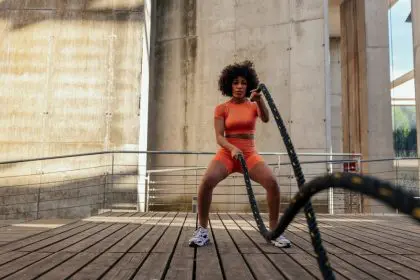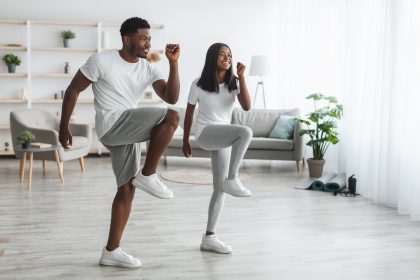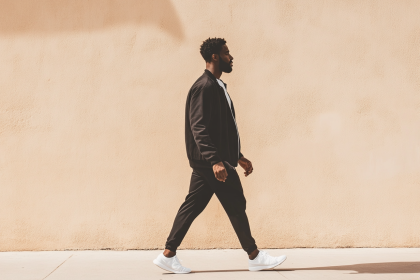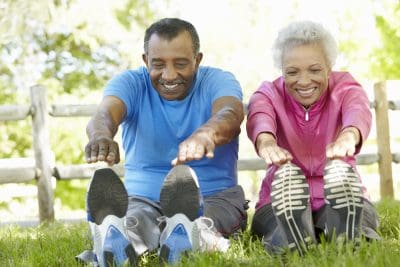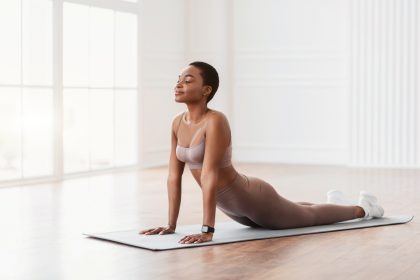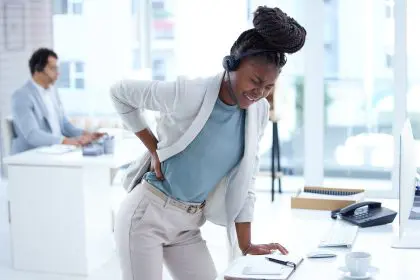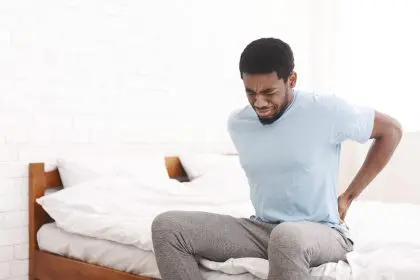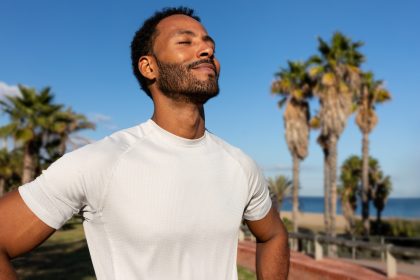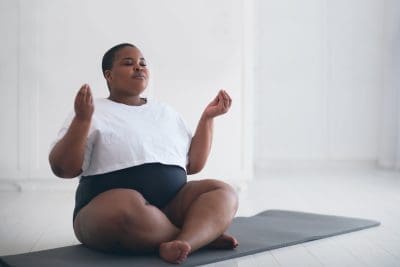Pilates provides a full-body, low-impact exercise system known for its ability to align and strengthen the body’s structure. This versatile practice offers significant advantages for older adults seeking to maintain health and independence. Regardless of age, conditioning level, or physical abilities, it’s never too late to begin incorporating Pilates into your fitness routine.
The 9 benefits of Pilates for older adults
Improving bone density Maintaining bone density becomes increasingly important with age to counteract conditions like osteopenia and osteoporosis. Weight-bearing exercise plays a key role in slowing bone deterioration. A 2021 research review suggests that Pilates can help prevent the typical decline in bone mineral density during postmenopausal years when such losses typically accelerate.
For those specifically targeting bone density improvements, apparatus-based Pilates offers particular advantages. Unlike mat exercises, workouts performed on equipment such as the Reformer and Tower utilize spring resistance that functions similarly to weights. This resistance-based training likely provides greater bone density benefits compared to mat work alone.
Enhancing posture Age-related bone density loss often contributes to misalignment and slouching. Poor posture creates a cascade of negative effects, including joint and organ compression, muscle imbalances, and chronic pain. Pilates specifically focuses on proper body alignment and balance, emphasizing joint mobility and ease of movement.
The practice develops both strength and flexibility in muscles while fostering greater awareness of proper alignment. This combination typically results in noticeably improved posture, reducing pain and enhancing overall function.
Improving balance and gait Balance and coordination remain essential for everyday activities, yet many people experience changes in walking patterns as they age. Pilates addresses these concerns through targeted balance training and strengthening of crucial areas including the trunk, hips, feet, and ankles.
A well-designed Pilates program builds core strength and stability while enhancing balance, significantly reducing fall and fracture risks. The practice also helps practitioners develop better movement habits, such as proper techniques for carrying objects, picking up items, and transitioning between sitting and standing positions.
Enhancing mobility Mobility represents the optimal balance between strength and flexibility that enables full, controlled range of motion. Focusing exclusively on strengthening exercises often leads to stiffness and restricted movement, while emphasizing only flexibility can leave aging bodies unsupported and vulnerable.
Research from a 2022 study indicates that just six weeks of regular Pilates practice can significantly improve mobility and functional movement in older adults. These improvements translate to greater ease in daily activities and reduced fall risk.
Elevating mood Pilates incorporates mindfulness through its emphasis on coordinating breath with movement. This inward focus and conscious breathing helps build self-awareness while calming the nervous system. A 2018 analysis suggests Pilates may improve mental health outcomes, particularly by reducing anxiety and depression symptoms.
Additionally, a 2022 research review noted that Pilates—more than other exercise forms examined—offered notable psychosocial benefits for older adults when practiced in group settings. These social advantages complement the physical benefits, creating comprehensive wellness improvements.
Enhancing cognitive function Recent scientific investigations reveal connections between regular Pilates practice and improved cognitive performance. A small 2022 study observed cognitive improvements among participants who engaged in Pilates sessions twice weekly for 12 weeks. Specifically, women in the study demonstrated enhancements in immediate memory and evocation memory after the three-month program.
This cognitive benefit adds another dimension to the practice’s value for older adults concerned about maintaining mental sharpness alongside physical fitness.
Reducing back pain Pilates specifically targets the core muscles, which function as a supportive brace that houses, lifts, and supports internal organs and the spine. A strong, well-conditioned core provides better back support, often alleviating chronic discomfort.
In a 2019 study, participants reported significant improvements in chronic lower back pain after beginning Pilates practice, with some experiencing relief after just three months of consistent training. This pain reduction capability makes Pilates particularly valuable for older adults managing back issues.
Strengthening immune function Emerging research suggests Pilates may help enhance immune system function, particularly among older adults. A 2020 study focusing on men over age 65 found significant improvements in immune system markers after a 12-week Pilates program.
This immune-boosting potential offers an additional health protection layer beyond the more obvious physical benefits of the practice.
Preventing injuries Pilates prepares the body for everyday activities requiring both strength and mobility. Its significant focus on joint support and stability helps practitioners move with greater awareness and control. As individuals learn these movement principles, they typically become less susceptible to common injuries.
The practice develops proprioception, awareness of body position in space, which helps practitioners become more mindful about how they move through their environment, further reducing injury risks.
Important considerations for older practitioners
Before beginning any exercise program, including Pilates, older adults should consult healthcare providers to ensure safety. Starting with individual sessions provides the best foundation. Working one-on-one with qualified Pilates instructors helps new practitioners confidently learn fundamentals and appropriate modifications for their specific health situations.
Many communities offer specialized Pilates group classes led by instructors trained to work with active older adults. These classes incorporate safe, bone-building modifications suitable for varying ability levels.
Individuals with low bone density or osteoporosis should avoid certain Pilates movements, including excessive twisting motions, forward flexion exercises similar to traditional crunches, and loaded flexion movements that involve rolling while in curved positions.
Specific Pilates exercises to avoid with bone density concerns include Rolling Like a Ball, Jackknife, and Roll Over, as these may place excessive stress on compromised bones.
Chair Pilates options
A chair provides an excellent prop for improving balance during standing exercises or assisting with lowering to the ground. For those unable to perform traditional mat exercises, chair Pilates, performed while seated, offers substantial benefits, including providing feedback about pelvic and spinal positioning, helping establish ideal posture without full weight-bearing, effectively strengthening core muscles, and accommodating limited space or workplace settings.
Chair Pilates also teaches better transitional movements between sitting and standing positions, a valuable skill for daily activities like using chairs, benches, or car seats. This adaptation makes Pilates accessible to nearly everyone, regardless of mobility limitations.
Building a sustainable practice
Consistent, mindful exercise remains essential for maintaining quality of life throughout the aging process. Pilates, with its adaptability and numerous modifications, offers an ideal low-impact option for older adults seeking to improve or maintain physical function.
The medical community increasingly endorses specialized Pilates programs designed specifically for older adults, incorporating bone-safe approaches appropriate for various health conditions. The practice meets practitioners at their current fitness level, gradually building strength, confidence, and mobility.
Like other forms of exercise, regular Pilates practice stimulates endorphin release, creating positive mood effects that further motivate continued participation. This comprehensive approach addresses both physical and psychological aspects of aging, supporting optimal function for active, independent living.


